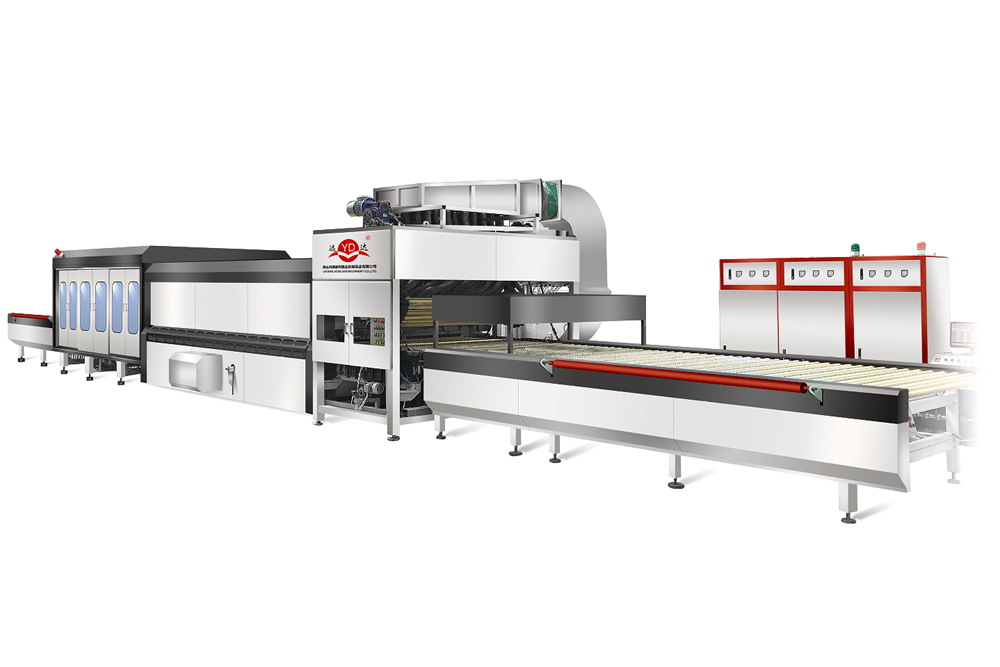Choosing the right glass tempering machine for your business is a critical decision that can significantly impact your production efficiency, product quality, and overall profitability. Glass tempering machines are essential in various industries, including construction, automotive, and consumer electronics, where safety and durability of the glass products are paramount. This guide will help you navigate the key factors to consider when selecting a glass tempering machine for your business.
Assess Your Production Requirements
The first step in choosing the right glass tempering machine is to assess your specific production requirements. Consider the following questions:
- What types of glass products will you be tempering?
- What are the size and thickness ranges of the glass you will process?
- What is your desired production capacity (e.g., how many square meters of glass do you need to temper per hour)?
Understanding these parameters will help you determine the size and capacity of the machine that best suits your needs. For instance, if your business involves tempering large glass panels for architectural applications, you will need a machine capable of handling large sizes and thicknesses. On the other hand, if you specialize in smaller, high-precision glass products, a machine designed for finer tolerances might be more appropriate.
Consider the Type of Tempering Furnace
Glass tempering machines typically come with two types of furnaces: horizontal and vertical. Each type has its advantages and is suited to different applications.
Horizontal Furnace: In a horizontal tempering furnace, the glass is placed on a roller bed and conveyed through the heating and cooling sections horizontally. This type of furnace is suitable for tempering flat glass sheets and is commonly used in architectural and automotive applications. The horizontal furnace is known for producing high-quality tempered glass with minimal distortion.
Vertical Furnace: In a vertical tempering furnace, the glass is suspended and conveyed vertically through the heating and cooling sections. This type of furnace is ideal for tempering glass with complex shapes and curves, such as shower doors and appliance glass. Vertical furnaces are typically more compact, making them suitable for facilities with limited floor space.
Evaluate Energy Efficiency
Energy efficiency is a crucial factor to consider when choosing a glass tempering machine, as it directly affects your operating costs. Modern tempering machines come with various energy-saving features, such as improved insulation, efficient heating elements, and advanced control systems that optimize energy usage.
Look for machines that offer:
Energy-efficient heating elements: These elements consume less power while maintaining the required temperatures for tempering.
Advanced insulation: High-quality insulation reduces heat loss, ensuring that more energy is used for the tempering process rather than escaping into the environment.
Smart control systems: These systems monitor and adjust the heating and cooling processes in real-time, optimizing energy consumption and improving overall efficiency.
Investing in an energy-efficient tempering machine may have a higher upfront cost, but the savings in energy expenses over time can offset this initial investment, leading to lower long-term operational costs.
Prioritize Quality and Reliability
The quality and reliability of a glass tempering machine are critical to ensuring consistent production and minimizing downtime. When evaluating different machines, consider the following factors:
Build quality: Look for machines made from high-quality materials and components that can withstand the rigors of continuous operation.
Reputation of the manufacturer: Choose machines from reputable manufacturers known for their reliable and durable products, such as LAD, whose glass tempering machines for sale can bring superior quality and performance to your project.
Warranty and support: A good warranty and responsive customer support can provide peace of mind and ensure that any issues are promptly addressed.
Investing in a high-quality, reliable tempering machine can prevent costly breakdowns and production delays, ultimately contributing to the efficiency and profitability of your business.
Cost Considerations
While cost is always a significant consideration, it is important to balance the initial investment with the long-term benefits and savings. Consider the total cost of ownership, which includes:
Purchase price: Compare the upfront costs of different machines, keeping in mind that higher-priced machines often come with advanced features and better build quality.
Operating costs: Evaluate the energy efficiency, maintenance requirements, and labor costs associated with each machine.
Maintenance and spare parts: Ensure that the machine comes with easy access to spare parts and support services to minimize downtime and repair costs.
By carefully considering these factors, you can choose a glass tempering machine that offers the best value for your investment and meets the specific needs of your business.
Conclusion
Selecting the right glass tempering machine for your business involves a thorough evaluation of your production requirements, the type of tempering furnace, energy efficiency, quality and reliability, automation and control features, and cost considerations. By making an informed decision, you can enhance your production capabilities, improve product quality, and achieve greater efficiency and profitability in your glass processing operations.
